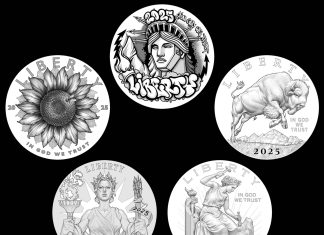The European Central Bank’s new security-enhanced €20 banknote entered circulation today, Nov. 25.

These notes appear as the latest release in the second generation of euros known as the "Europa Series." €5 and €10 banknotes preceded this release, and they included new anti-counterfeiting devices as well.
"Cash was, is and will continue to be an important means of payment," said ECB Executive Board member Yves Mersch. "The introduction of the new €20 banknote is tangible proof of this."
Independent banknote designer Reinhold Gerstetter of Berlin created the €20 design. At the core of new anti-counterfeiting measures is a "portrait window" that shows a transparent likeness of Europa, a figure from Greek mythology. The portrait is visible from both sides of the note when held up to the light.

4.3 billion of the notes have been printed so far, each on cotton paper as is standard for the series. They join the original €20 banknotes, which remain legal tender and will be gradually withdrawn from circulation.
This release comes after a long period of public information and marketing campaigns to ensure a smooth introduction. Equipment manufacturers and suppliers were invited to a seminar at the Bank of Italy in Rome in February, which was followed a few weeks later by an official unveiling ceremony at the European Central Bank headquarters in Frankfurt.
Europa series banknotes debuted in May 2013 with the €5 note. The €10 noted launched in September 2014. New versions of the €50, €100, €200 and €500 notes will be issued over time.






… and in news from the US: Congress and its partner Crane Paper announced continued production of $1 bills, using a design essentially unchanged for 80 years.
What’s wrong with old design?
All other major countries long ago switched to $1 and $2 (or equivalent) coins that last far longer and have much less expensive lifecycle costs. Ones make up nearly half of all US bills and have to be replaced every 3 years or so. Because the current design has essentially no anticounterfeiting features it can be reproduced with any decent-quality printer. The GAO estimates that switching to coins for those denominations would save both the government (i.e. taxpayers) and businesses somewhere between $750 million and $1 billion annually.